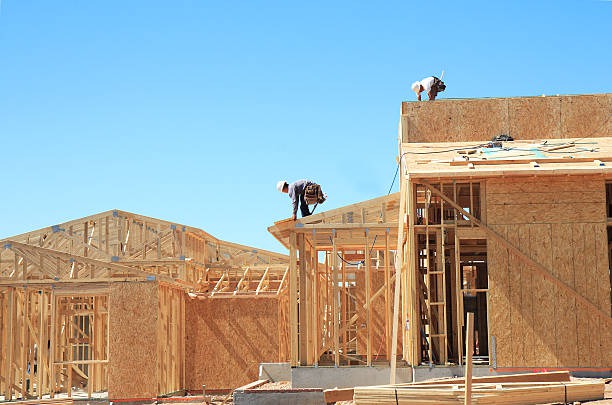Building your dream home can be both exciting and nerve-wracking. With all the decisions to make and details to consider, it’s easy to feel overwhelmed. Whether you’re stepping into property design for the first time or you’ve done this a few times before, there are common pitfalls that you should be aware of. Fear not, because we’re here to provide expert advice on how to navigate this complex process smoothly.
1. Understand Your Needs First
Before rushing into the design process, take a step back and understand what you really need. It’s tempting to incorporate every trend you see online, but practicality should come first. Think about your lifestyle, the size of your family, and future needs. Make a list of must-haves and nice-to-haves, and prioritize accordingly.
Key Questions to Consider
-
How much space do you actually need?
-
What features will improve your daily life?
-
How long do you plan to live in this home?
2. Budget Wisely
It’s all too common for first-time builders to underestimate their expenses. Establishing a clear budget is crucial. Be sure to account for everything from construction costs to interior finishes. It’s wise to set aside a contingency fund for unexpected expenses.
Budget Tips
-
Consult with multiple professionals to get accurate estimates.
-
Avoid making major changes to the design mid-way, as these can be costly.
-
Regularly review your budget to stay on track.
3. Location
Where you build is just as important as what you build. Consider the neighborhood, proximity to schools and work and potential resale value. It’s easy to fall in love with a piece of land, but make sure it’s practical for your needs.
Things to Evaluate
-
Access to amenities
-
Neighborhood safety
-
Future development plans in the area
4. Get the Design Right
Designing your home goes beyond aesthetics. It’s about functionality and flow. A beautiful home that doesn’t accommodate your lifestyle isn’t truly successful. To bring this vision to life, partnering with experienced home builders in Lunenburg, Nova Scotia, ensures your space is tailored to your needs and built to last.
Design Aspects to Focus On
-
Open Floor Plans: Great for families and entertaining.
-
Natural Light: Incorporate large windows to bring in sunshine.
-
Flexibility: Design spaces that can evolve with your needs.
5. Engage Experienced Professionals
Selecting the right professionals is vital. From architects to contractors, ensure they understand your vision and have a track record of excellence. Interview them and ask for references, and you’ll quickly identify the true experts in home building.
What to Look for in Professionals
-
Strong portfolio of previous work
-
Good communication skills
-
Transparent pricing and contract terms
Don’t Rush the Process
Patience is a virtue in homebuilding. Rushing can lead to mistakes and regrets. Take your time to ensure everything is done correctly the first time.
6. Focus on Sustainability
Sustainability isn’t just a trend. It’s a necessity. Consider eco-friendly materials, energy-efficient appliances, and green technologies to make your home more sustainable.
Ways to Build Sustainably
-
Use recycled or sustainable materials
-
Invest in solar panels and energy-efficient systems
-
Design with natural ventilation in mind
7. Stay Involved in the Process
Even though you have professionals handling the project, your involvement is crucial. Regular check-ins can prevent misunderstandings and ensure your vision is being realized.
How to Stay Engaged
-
Visit the site regularly
-
Communicate frequently with your team
-
Review progress reports and ask questions
8. Evaluate the Little Details
Details matter. From doorknobs to paint finishes, these small aspects can make a big difference. When planning custom home construction, make thoughtful choices that complement your overall design.
Attention to Detail
-
Ensure finishes are cohesive
-
Choose quality fixtures that offer durability
-
Think about how small details can enhance your daily life
9. Plan for Storage
One common oversight among first-time builders is underestimating storage needs. Make sure your design includes ample and well-thought-out storage solutions, whether it’s built-in cabinets, closets, or a dedicated pantry. These will keep your home organized and functional in the long run.
Storage Tips:
-
Plan for hidden storage in unused spaces (e.g., under stairs).
-
Customize closets to maximize functionality.
-
Consider future storage needs as your family grows.
10. Think About Future Maintenance
A home requires ongoing care, so consider the maintenance demands of the materials and design features you choose. Low-maintenance options can save you time and money in the future.
Maintenance-Friendly Ideas:
-
Opt for durable flooring and finishes.
-
Choose exterior materials resistant to weather conditions.
-
Invest in quality systems (e.g., HVAC, plumbing) that minimize repairs.
Final Thoughts
Building your first home is a massive undertaking, but with careful planning and awareness of common pitfalls, it can be a rewarding experience. Remember, this is your opportunity to create a space that truly reflects your personality and meets your needs. Consult with professionals and take your time. You’ll soon have the keys to a beautiful home that you’ll cherish for years to come.


